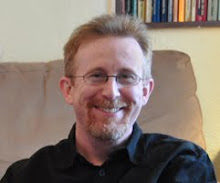I lived in the San Francisco Bay Area for nine years. It was where I came to love bookstores. It was where I developed an understanding of what
Ray Oldenburg
called the "third place," those places away from home and work that give character to communities.
Howard Schultz also developed an understanding of the third place; he put the insight to much better use than I have.
Anyway, there were great bookstores in the Bay Area. Independents and used bookstores. And when a Borders opened on University Avenue in Palo Alto, I enthusiastically accepted it as part of the local culture without understanding the impact
Borders and Barnes & Noble would have on independent stores.
Amazon.com had not yet conquered the world. The bookstores I loved were not only places to browse books, but because many of them had attached cafés, they were ideal places to meet with a friend for a hot beverage and good conversation. (Printers, Inc., was one of the best; their space in downtown Mountain View is still a bookstore/café operated by
Books, Inc.) Used bookstores, like
BookBuyers in Mountain View and
Know Knew Books in Palo Alto, were treasure hunts where I found the likes of
The Last Convertible
by Anton Myrer and Hemingway's
A Moveable Feast
; books I would probably never have stumbled onto in a chain retailer.
Those bookstores helped define the community and so they helped define that stage of my life. I'm thrilled that a few of the bookstores I frequented are still around.
Culture shock hit when we moved to Raleigh, North Carolina, and found that independent and used bookstores were much less common. Third places were more likely to be chains like Starbucks. Borders became a guilty pleasure. We moved to
St. Petersburg, Florida, in 2004. More culture shock. Our local Borders is usually filled with people shouting at each other (or into their cell phones). Much of this is more about changing times than changing geography. We do have
a large and popular used bookstore downtown, but they have a shrine to extremist idealogues that I find too distracting. A few other used bookstores in St. Petersburg, but the selection is limited. It's not their fault; there's not enough business to support the kind of stores I fell in love with.
Borders recently closed its B. Dalton bookstore in Laredo, Texas. That makes Laredo one of the largest cities in the United States without a bookstore. There are suggestions that Barnes & Noble will open a store there in the future. Should we worry that a city of 250,000 people can't support a bookstore? Or should we accept that online booksellers and
Kindle
-like e-book readers are good enough? I don't have the answer.
I don't know what the future of literacy in our country is. Or the future of third places. I don't know if it's a bad thing that the internet (and bloggers like me) seem to be shortening our collective attention span.
I can't prove that it's a bad thing that we spend more time in third places text messaging people remotely than we spend talking with the people in the room with us. I feel that our society has been unraveling somewhat in recent years and that this trend is continuing, but I don't have data to back that up. I just know I miss the bookstores, and I think we'll all miss them someday. I miss them like I miss my wasted youth. I miss them like a lost love. And I don't think they're coming back.
